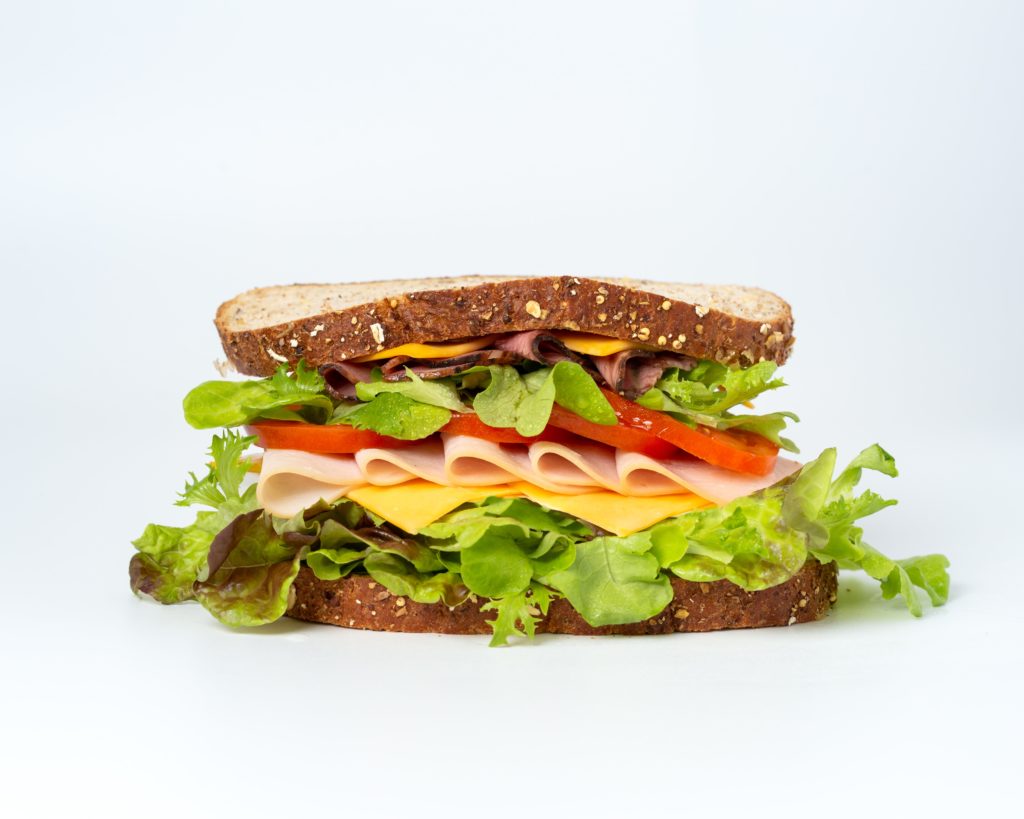All fields are required
Posted in Food Safety on September 9, 2019

Being a stay-at-home-dad, lunchtime can be a time when I get to have a bit of fun in the kitchen. The little one is asleep, even I take a break from work to eat, and sometimes there is a recipe I want to try out before preparing it for the rest of the family. Other times though, when time is short, I will fix a sandwich. It was not until I began a food writer that I realized: Sandwich Food Safety is important!!
We all have our favorite go to sandwich, mine is PB&J. If I had to pick a second it would be fried bologna – don’t judge. Whatever your favorite is, or if you like to live dangerous and have heartier sandwiches filled with all kinds of goodness, there is one thing most of us are unaware of: sandwiches are one of the most high-risks food we can make.
Between how the sandwich is made, the type of ingredients we use, and what we do with the uneaten (if there is any leftover that is) part all play a part in food safety we need to be aware of. Let’s take a look at what kinds of dangers await us while making a regular old sandwich and how we can prevent foodborne illnesses while making them.
No, I’m not talking about how you prepare your sandwich; although there are a few tricks that can help keep you safer but we will get to that. What I’m referring to is the tools of the trade. There are not a lot but the ones we use are vital to food safety.
Hands. These tools you carry with you everywhere and are the first ones to touch the food you eat. Wouldn’t it stand to reason your hands need to be washed? Before you even grab the loaf of bread take the time to wash your hands. The CDC has hand washing down to a science and has made their information available to us. If you like the science of it, give it a read. Here is the simple version:
Surfaces. No matter what surface you use to fix your sandwich, they all have one thing in common: bacteria. Counters, cutting boards, plates, the floor (kidding) all need to be cleaned before you prepare food. This applies to everything you prepare for any meal.
Let’s take this on step further and commit right now that we will wash surfaces AND utensils after each use. Cross-contamination occurs when bacteria from one food item transfers to another when we use the same surface or utensil without washing them. Raw food needs the most attention and care due to the chance of bacteria being so high. Preparing raw food with one cutting board and one knife is asking for bacteria to spread to other foods and surfaces.
Containers. On the odd chance you do not finish your sandwich, storing the leftovers properly mean the difference between eating a fresh, bacteria-free sandwich later and food poisoning. Most of us have had a bout with food poisoning in the past so taking a few extra minutes to store leftover the right way can keep us from experiencing that again.
Not only is an air-tight container the best way to keep food fresh, make sure you put it in the refrigerator. Do not leave it on the counter so you won’t forget about it. Refrigerators should be set to 40 degrees for the maximum “chill effect”.
Think about the most-used ingredients in a sandwich. Off the top of my head, I can think of a few: mayo, lettuce, deli meats, and cheese. There is no coincidence all of the above motioned ingredients at one point in time have been associated with E. coli. Put one or more of them together and we are playing a dangerous game.
E. coli is a bacteria that lives all around us and even inside us. There are a few certain types though that when ingested can cause illness and worse problems if left unchecked.
Here are a few symptoms of E. coli:
Did you ever think eating a sandwich could lead to this? Honestly, I didn’t. We hear about E. coli outbreaks a lot and following a few simple steps we can greatly decrease the chances of getting sick. These steps don’t just apply to making a sandwich but to all food we make. You will recognize a few of them from above but all need to be followed:
When I shared what I was talking about in this post to a friend of mine, it was like a light went on in his head. He told me he had been sick a few months back with food poisoning but couldn’t figure out where he had gotten it from. He remembered fixing lunch the day before he was sick and not putting away his sandwich (which contained mayonnaise) on the counter to eat later. Unfortunately, he didn’t eat the last bit of his sandwich until later that evening. While I’m not 100% sure that is where the food poisoning came from, if I was a betting man I would put a large amount on it though.
Who knew that making an innocent sandwich had the possibility to make us sick? Now, when I am in the mood for one of my favorite sandwiches I am more careful and follow the same principles I use when cooking dinner.
Taking the time to prepare our tools: washing our hands and surfaces, separating food to not cross-contaminate, cook food thoroughly when it applies, and storing leftovers correctly can save us all from getting sick.
By: Dwight Spencer, Contributing Writer (Non-Lawyer)